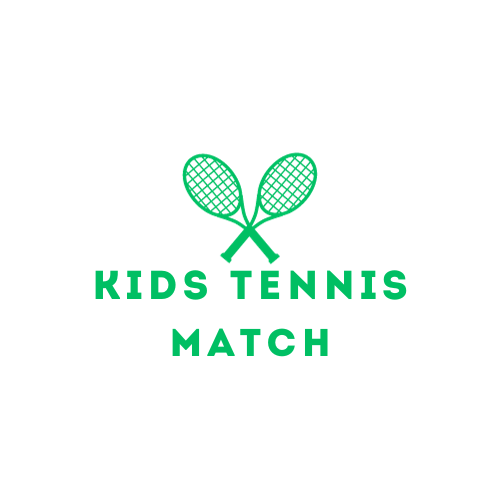Have you ever wondered if kids with physical disabilities can play tennis? The answer is a resounding yes! While it may come as a surprise to some, tennis is a sport that can be adapted to accommodate individuals with various physical disabilities. From modifying the rules and equipment to providing specialized coaching, tennis opens up a world of possibilities for inclusivity and empowerment. Let’s explore how kids with physical disabilities can thrive on the tennis court and discover their hidden potential.
Physical Disabilities and Tennis
Tennis is a sport that offers numerous benefits for children with physical disabilities. Not only does it provide them with the opportunity to engage in physical activity, but it also promotes social interaction, boosts confidence, and enhances physical fitness and coordination. By adapting the sport to meet the unique needs of these children, tennis becomes an inclusive and empowering activity that can be enjoyed by all. In this article, we will explore the various types of physical disabilities, the adaptations made to accommodate kids with disabilities in tennis, the impact of inclusion on personal development, how to overcome challenges and barriers, success stories and inspirational examples, the importance of parental support, and the design considerations for creating accessible tennis facilities. Let’s dive in and discover the world of physical disabilities and tennis!
Understanding Physical Disabilities
Physical disabilities encompass a wide range of conditions that affect a person’s ability to move, see, hear, or perform everyday activities. Some common physical disabilities include mobility impairments, visual impairments, and hearing impairments. Each disability presents unique challenges and requires tailored adaptations to ensure inclusivity in tennis.
Mobility Impairments
Mobility impairments refer to conditions that affect an individual’s ability to move or control their limbs. This includes conditions such as paralysis, limb loss, muscular dystrophy, or cerebral palsy. Children with mobility impairments may require assistive devices like wheelchairs or crutches to aid in movement.
Visual Impairments
Visual impairments pertain to conditions that affect a person’s ability to see, ranging from partial vision loss to complete blindness. To accommodate children with visual impairments, modifications are made to the environment and equipment to enhance their awareness and accessibility.
Hearing Impairments
Hearing impairments involve a loss of hearing ability, either partial or complete. Sign language or other visual communication techniques are often used to facilitate communication with deaf or hard-of-hearing children on the tennis court.
Adapting Tennis for Kids with Physical Disabilities
To ensure that kids with physical disabilities can fully participate in tennis, various adaptations are made to equipment, courts, and rules.
Equipment Modifications
Equipment modifications play a crucial role in making tennis accessible to children with physical disabilities. For mobility impairments, specially designed wheelchairs and racquet holders are used. Visual impairments can benefit from modified balls that produce sounds or have tactile elements, enabling them to track the ball. Additionally, visually impaired players may use larger rackets with modified grips. Hearing-impaired children can rely on visual cues, such as brightly colored balls or flags, to better track the game.
Court and Facility Modifications
Making tennis courts and facilities accessible involves incorporating features such as ramps, wide entrances, and smooth surfaces to accommodate wheelchairs and other mobility aids. Visual cues, such as contrasting colors or tactile markings, can provide guidance to players with visual impairments. Additionally, facilities should have accessible restrooms and seating areas to ensure the comfort and convenience of all participants.
Rule Modifications
Some modifications to the rules of tennis may be necessary to create a level playing field for children with physical disabilities. For example, players with mobility impairments might be allowed to let the ball bounce twice before returning it. Rule modifications, such as using different sizes of courts or allowing players to use alternative serving techniques, are implemented to ensure fairness and inclusivity.
Specialized Programs and Organizations
Numerous programs and organizations exist to support children with physical disabilities interested in playing tennis.
Adaptive Tennis Programs for Kids
Adaptive tennis programs specifically cater to children with physical disabilities, providing them with the opportunity to learn and play the sport in an inclusive setting. These programs often have experienced coaches and specialized equipment to ensure a positive and supportive environment for all participants.
Paralympic Tennis
The Paralympic Games, held in conjunction with the Olympic Games, showcase high-level sports competition for athletes with disabilities. Paralympic tennis offers children with physical disabilities the chance to compete at a national and international level, providing them with a platform to showcase their skills and inspire others.
Disabled Sports Organizations
Disabled sports organizations, such as the International Wheelchair Tennis Federation (IWTF) or the National Disability Sports Alliance (NDSA), work tirelessly to promote and develop tennis opportunities for children with physical disabilities. These organizations provide resources, coaching, and various support systems to help individuals with disabilities pursue their tennis aspirations.
Understanding the Importance of Inclusion
Inclusion in sports has far-reaching benefits for children with physical disabilities.
Promoting Social Interaction
Participating in inclusive tennis programs allows children with disabilities to interact with peers of diverse abilities. Through shared experiences and teamwork, they develop important social skills and build relationships that can last a lifetime. Inclusion also fosters a sense of belonging and acceptance, breaking down barriers and promoting a more inclusive society.
Increasing Confidence and Self-Esteem
Engaging in tennis helps children with physical disabilities develop a sense of accomplishment and self-confidence. As they master new skills, face challenges, and achieve personal goals, their self-esteem grows. Being part of a team and experiencing success on the court can have a transformative effect, instilling a positive mindset and a belief in their abilities.
Enhancing Physical Fitness and Coordination
Participating in tennis improves physical fitness, regardless of ability level. The sport’s dynamic nature promotes cardiovascular endurance, muscular strength, agility, and coordination. For children with physical disabilities, tennis offers a unique opportunity to engage in physical activity, promoting overall health and well-being
Overcoming Challenges and Barriers
While inclusive tennis programs provide a supportive environment, there are challenges and barriers to overcome.
Access to Resources and Support
Access to specialized resources and support is crucial for children with physical disabilities to engage in tennis. This includes access to adaptive equipment, trained coaches, and suitable facilities. Advocacy efforts and collaborations between communities, schools, and organizations are essential in providing the necessary resources to ensure inclusion for all.
Communication and Accessibility
Clear and effective communication is essential in inclusive tennis environments. Coaches and participants need to be knowledgeable about different communication methods, including sign language and visual cues, to ensure effective interaction. Providing accessible information in a variety of formats, such as braille or large print, also contributes to ensuring inclusivity.
Addressing Stereotypes and Stigmas
Stereotypes and stigmas surrounding physical disabilities can create barriers to inclusion and participation. Education and awareness campaigns are vital in challenging societal attitudes and dispelling misconceptions. By highlighting success stories and celebrating achievements of individuals with physical disabilities in tennis, we can promote a more inclusive and accepting society.
Success Stories and Inspirational Examples
Profiles of young tennis players with disabilities serve as a testament to the power of inclusivity in sports.
Profiles of Young Tennis Players with Disabilities
The achievements of young tennis players with physical disabilities are truly inspirational. From competing in local tournaments to representing their countries on the international stage, these individuals demonstrate talent, resilience, and determination. Their stories inspire others to overcome challenges and pursue their dreams.
Role Models in the Tennis Community
Role models within the tennis community play a crucial role in inspiring and supporting children with physical disabilities. Whether they are professional players, coaches, or advocates for inclusion, these individuals serve as beacons of hope and sources of motivation. Their accomplishments reinforce the belief that anything is possible, regardless of physical ability.
Celebrating Achievements and Progress
It is essential to celebrate the achievements and progress made by children with physical disabilities in tennis. Recognizing their efforts and successes not only boosts their self-esteem but also raises awareness of the capabilities of individuals with disabilities. By highlighting these achievements, we can break down societal barriers and create a more inclusive world.
Parental Support and Involvement
Parents play a vital role in supporting and advocating for their children with physical disabilities.
Finding the Right Opportunities
Parents play a crucial role in helping their children find suitable tennis programs and opportunities. Researching and connecting with local adaptive tennis programs, disability sports organizations, and coaches familiar with working with children with disabilities can help parents identify the right options for their child’s specific needs and abilities.
Encouraging Participation and Effort
Parents can provide ongoing encouragement and support to their children as they engage in tennis. Whether it’s attending matches, offering words of encouragement, or helping with transportation, parental involvement shows dedication and reinforces a child’s passion for the sport.
Advocating for Inclusion and Equality
Parents serve as advocates for their children with physical disabilities, ensuring that they have equal access to tennis opportunities and resources. By advocating for inclusion in schools, communities, and sports organizations, parents can help create an environment that values and supports the participation of individuals with disabilities.

Building Accessible Tennis Facilities
Creating accessible tennis facilities is crucial in promoting inclusivity.
Design Considerations for Accessibility
When designing tennis facilities, various considerations must be taken into account to ensure accessibility. This includes providing adequate space for wheelchair maneuverability, installing ramps and lifts for easy access to all areas, and designing courts with proper dimensions to accommodate wheelchair play.
Incorporating Universal Design Principles
Universal design principles focus on creating environments that can be used by people of all abilities. By incorporating features such as wide entrances, accessible seating areas, and clear signage, tennis facilities can ensure that individuals with physical disabilities can navigate the space independently and safely.
Ensuring Safety and Comfort
Creating accessible tennis facilities involves prioritizing the safety and comfort of players with physical disabilities. This can involve installing non-slip surfaces, providing shade structures, and ensuring proper lighting for visually impaired individuals. By addressing these factors, players can fully enjoy the tennis experience without concern for their safety or well-being.
Continuing the Momentum
To ensure a more inclusive future for children with physical disabilities in tennis, ongoing efforts are necessary.
Creating Awareness and Education
Education and awareness play a vital role in promoting inclusivity. It is essential to educate coaches, instructors, and the broader tennis community about the needs and capabilities of children with physical disabilities. By fostering a culture of understanding and empathy, we can create an environment that embraces inclusivity and celebrates diversity.
Investing in Research and Development
Continued investment in research and development is crucial for improving equipment, facilities, and coaching techniques for children with physical disabilities. By supporting initiatives that focus on innovation, we can push the boundaries of what is possible and ensure that tennis remains an accessible and enjoyable sport for all.
Collaborating for a More Inclusive Future
Collaboration among various stakeholders, including sports organizations, schools, governments, and disability advocacy groups, is vital in fostering inclusivity in tennis. By working together, we can identify and address barriers, share best practices, and create a united front in advocating for the rights and opportunities of children with physical disabilities.
In conclusion, tennis is a sport that offers immense benefits to children with physical disabilities. By understanding the different types of disabilities, adapting the sport to meet their needs, and fostering a culture of inclusion, we can create a tennis community that celebrates diversity and empowers all participants. Through parental support, accessible facilities, and ongoing efforts to educate and collaborate, we can ensure that every child, regardless of physical ability, has the opportunity to experience the joys and benefits of tennis. Let us continue to build a more inclusive future for children with physical disabilities and make tennis truly a sport for all.





